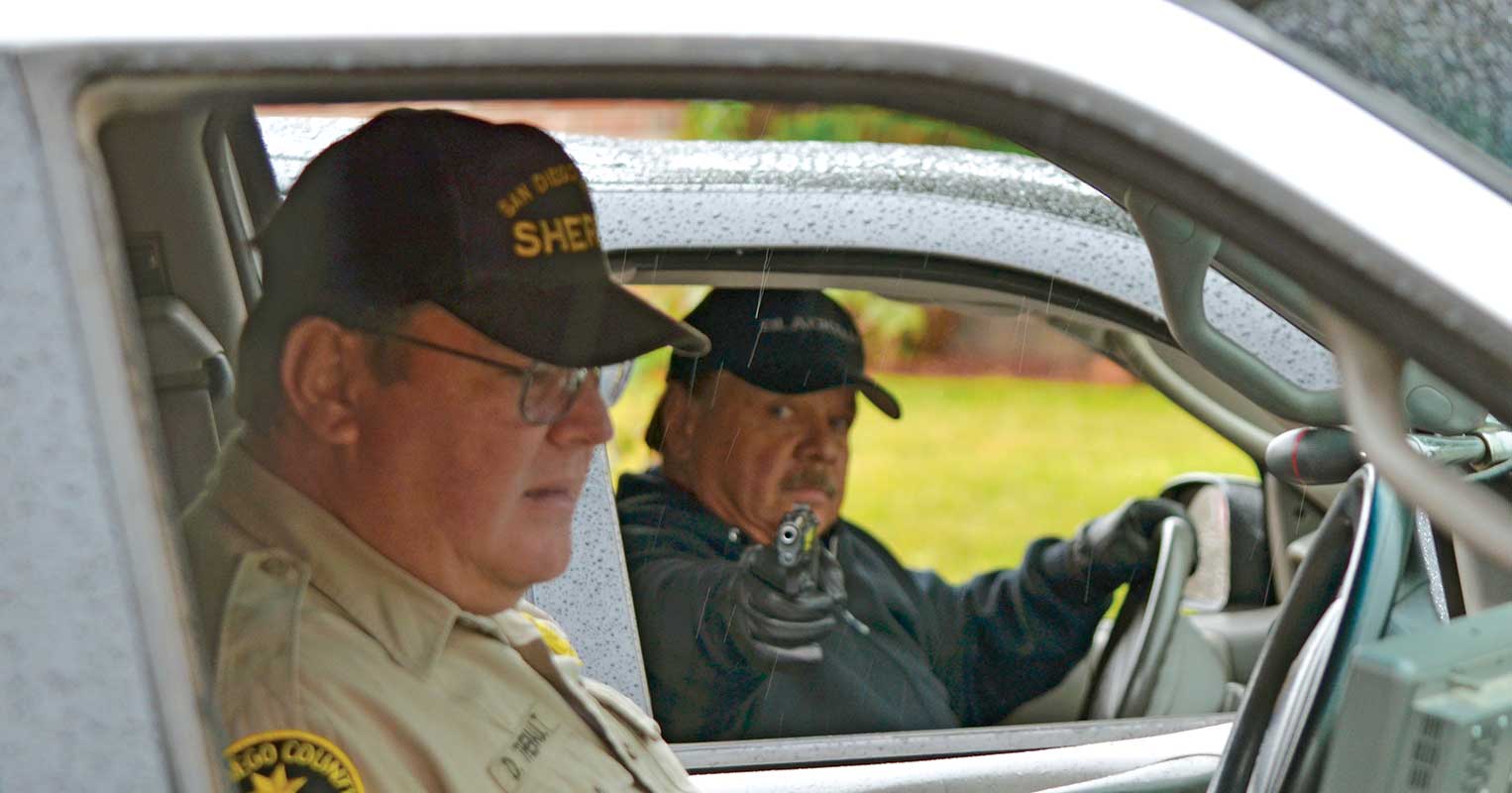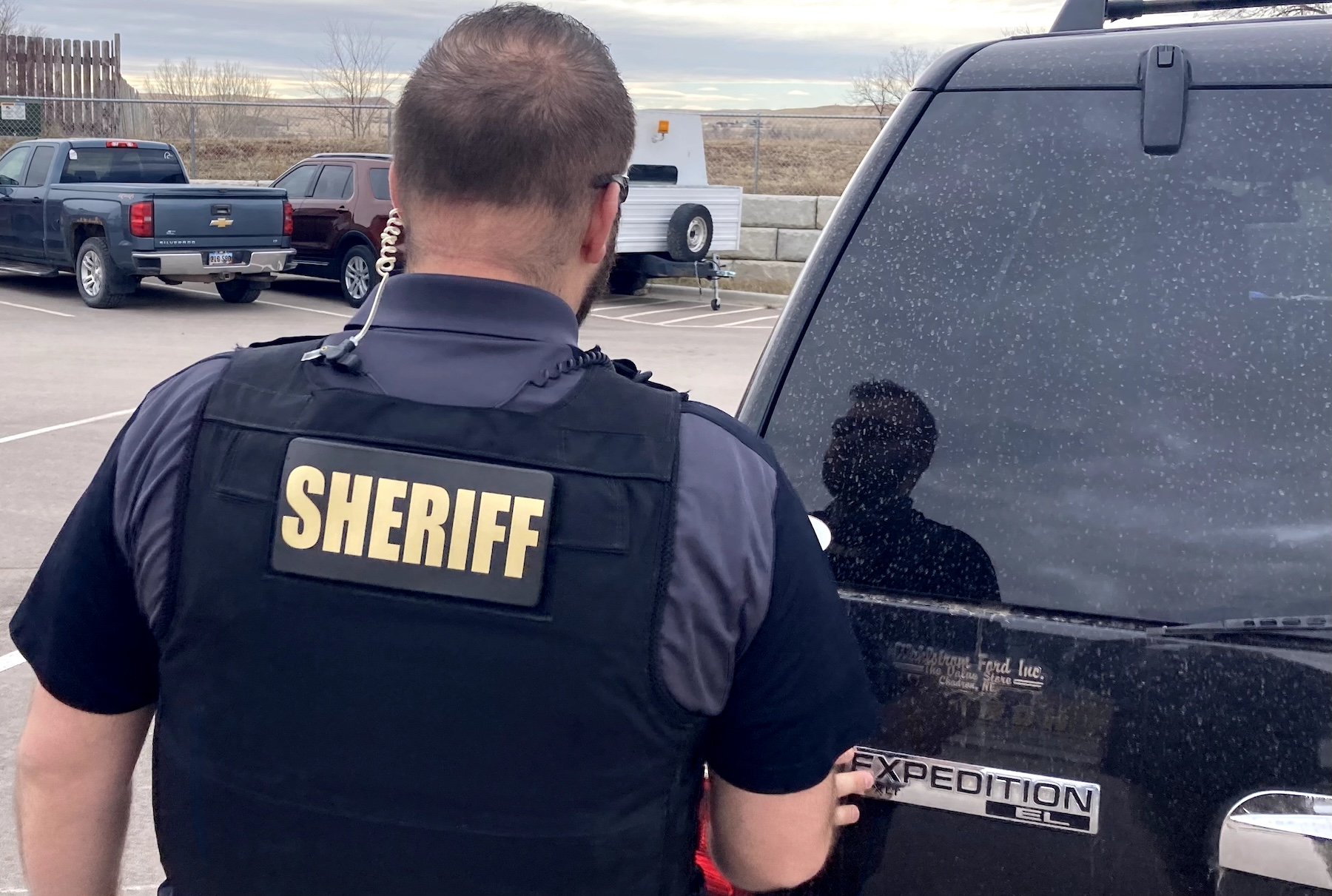
RESERVE-1
What if … evil pulled right along side you?
Training and years of experience prepares you for your duty ride, but are you really prepared for what might happen in an instant? Reserve academies do what they can to prepare you with the basics, but sometimes the bad guys know those basics as well as you.
A few years ago, San Diego Police lost three good officers in sudden assaults. Two of the officers were killed in the line of duty: Jeremy Henwood and Christopher Wilson. Detective Donna Williams (along with her 18-year-old daughter) was stabbed to death in her home by her mentally ill son.
Officer Henwood’s death is probably the best example of a sudden assault. He was on routine patrol when a car came up behind him and the driver flashed its headlights at him. Perhaps thinking it was a motorist in trouble, Henwood pulled to the right lane and a black Audi came alongside. The occupant then pointed a shotgun out the passenger window and fired one round, hitting Henwood in the head. A couple with a baby was driving behind Henwood when the shooting occurred and stopped to help. As the husband tried to render first aid, the wife got on the officer’s radio and called for help.
WHAT IF?
It seems many ambushes are situational while only a few are planned. The problem is, many officers only think about and wait for a traditional ambush — like something you might see in a training scenario at the pistol range. Countless ambushes are sudden assaults that happen in the heat of the moment, where some suspects were trained in tactics ahead of time, but weren’t quite sure how they were going to execute them until that very moment.
We have to be prepared for any sudden assault from any number of unexpected places. This could be from a suspect 3′ away, a setup we enter, or perhaps a distraction aided by others whose sole purpose is to dilute our attention. Very seldom will we have time to position ourselves in an area of concealment and wait for the aggressor.
Newer officers, whether full-time or reserve, are experts in rules and regulations — and very few start thinking outside the box until later in their careers. The “what-ifs” only come with years on the street and working with more seasoned officers. The question is: Are the methods taught in current academies enough to prepare officers for the reality of a sudden assault?
RECOGNITION, TRAINING, TACTICS
What should reserve officers do to mentally and physically prepare for a violent attack, which may include the element of surprise? According to a 2011 briefing in the LAPD TacOps magazine, there are certain signs of a potential ambush officers should recognize: blocked alleys/roadways; anonymous calls to odd or unpopulated locations; lights out as you approach; manufactured kill zones; drawing you down long driveways to make you vulnerable; no call-back numbers; and streets that are unusually quiet or absent of activity.
Simply having reserves in 2-officer units, the agency has already given officers an edge on these types of possible attacks. Currently, California POST is updating their training programs and techniques. Recruits are now taught to return fire while moving to cover, contact dispatch and advise of shots fired and suspect description, and to call for backup and establish a perimeter. As a reserve officer you should work with your training coordinator and set up a weekend scenario on various ambush and surprise attacks.
Another excellent source of training is through police conferences and seminars. Every year the California Reserve Peace Officers Association puts on a 3-day training conference presenting information, experiences, best practices and current situational thinking. And California hasn’t cornered the market on training conferences. There’s a multitude of training opportunities across the US — most of it’s a mouse click or Google search away — seek it out. Excellent training leads to improved tactics.
Always vary your daily routine; don’t become predictable. Think beyond the normal; talk to your FTOs and listen to their tactics. Remember the Henwood scenario. Use the “short stop” technique; never stop your car parallel with another vehicle, offset and stop your vehicle 10′ behind. Pay attention to the vehicles around you and leave room to maneuver if you have to. This simple maneuver may allow you the extra seconds you need to react in an assault situation.
You need to constantly be aware of your environment and think outside the box. When it comes to critical, life-threatening incidents, it will be your immediate reaction and training that gets you through. What you practice today, may keep you and your partner alive tomorrow.















